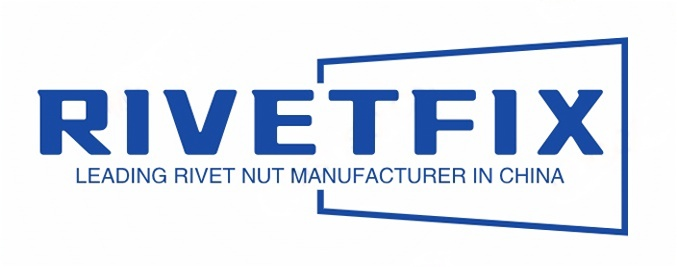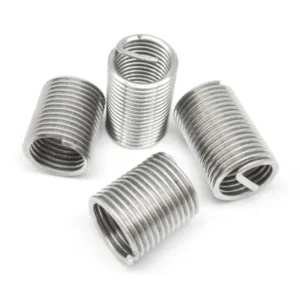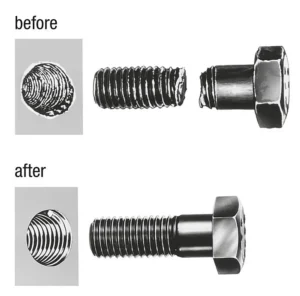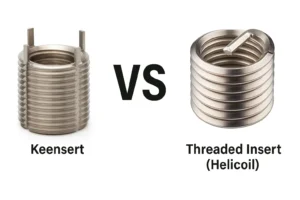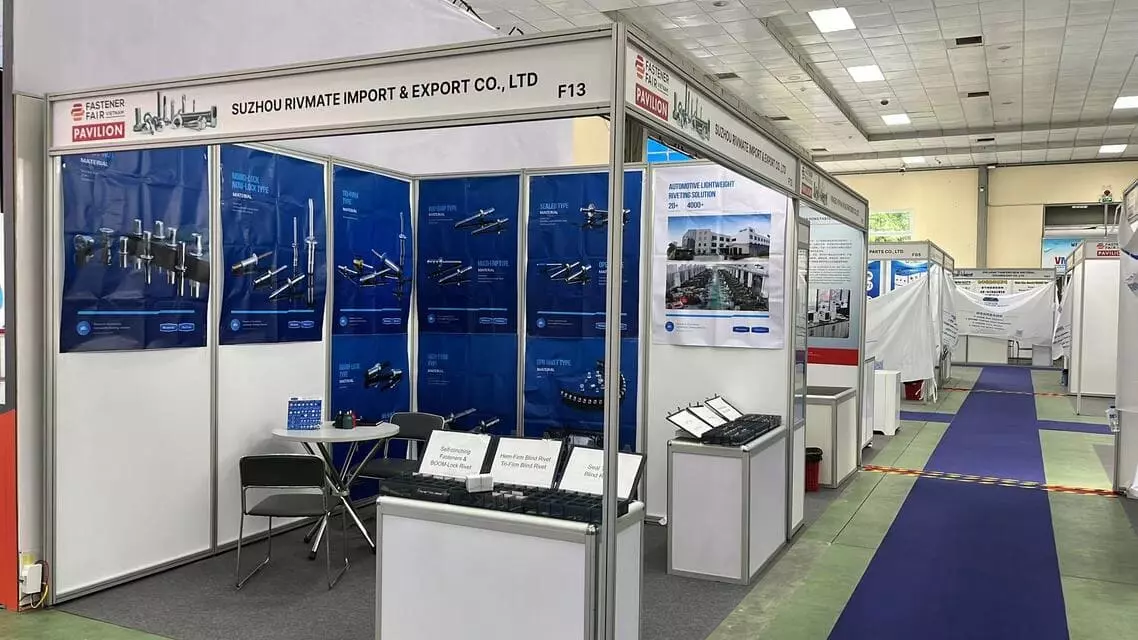Ultimate Guide to Different Types of Threaded Inserts
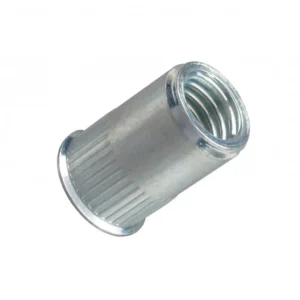
Leading Rivet Nut Manufacturer and Supplier in China
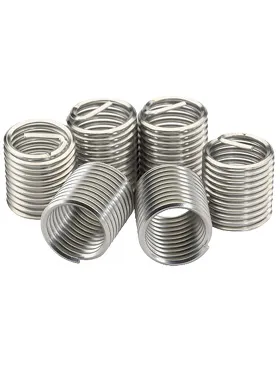
Threaded inserts are essential components in modern fastening systems, offering strong, reusable threads in materials that are too soft or thin to support traditional threading. Whether you’re reinforcing threads in metal, plastic, or wood, selecting the right type of insert can significantly improve performance, durability, and reliability. In this ultimate guide, we’ll explore the different types of threaded inserts, their structures, materials, and applications—helping you make the best choice for your next engineering or repair project.
Table of Contents
What Are Threaded Inserts?
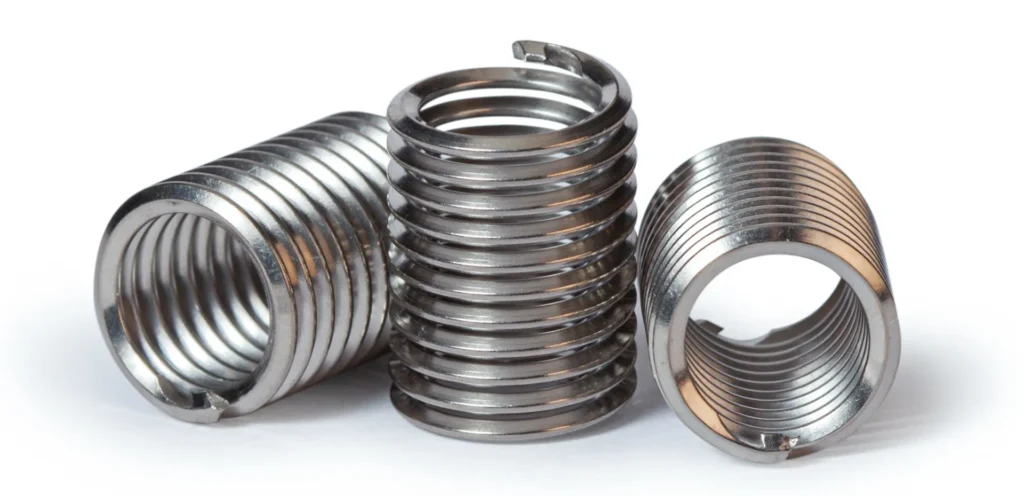
Threaded inserts, also known as helical inserts or coil inserts, are fastening components designed to be installed into pre-tapped holes in a base material to enhance thread strength, wear resistance, and overall durability. Made from high-strength stainless steel wire wound into a helical shape, these inserts feature internal and external threads that are coaxially aligned—the external threads engage with the base material, while the internal threads receive bolts or screws.
They are typically used in materials with low mechanical strength (such as aluminum, magnesium, or plastics) to provide a durable, high-performance internal thread that rivals or even exceeds that of steel.
Common Materials:
- Stainless steel (e.g., SUS304, SUS316) is the most commonly used material due to its excellent corrosion resistance and mechanical strength.
- Other options include nickel-plated carbon steel, titanium alloys, and phosphor bronze, depending on the application requirements.
Key Functions and Advantages:
1. Enhance Thread Strength in Base Materials
In low-strength materials like aluminum or plastic, wire thread inserts form a robust internal thread capable of withstanding high torque and tensile forces, effectively preventing thread stripping or failure.
2. Repair Damaged or Stripped Threads
If an existing threaded hole is damaged, corroded, or worn out, a wire insert can be used to restore it to its original size and strength. This avoids the need to replace the entire component and reduces repair costs significantly.
3. Improve Vibration and Wear Resistance
Thanks to their elastic structure, wire thread inserts absorb part of the vibrational energy, reducing the risk of fastener loosening over time. Their stainless steel construction also greatly improves resistance to wear and allows for multiple assembly/disassembly cycles.
What Are the Main Types of Threaded Inserts?
Threaded inserts can be broadly categorized into two main types based on their structure and functionality: Free-Running Inserts and Self-Locking Inserts. Although they are similar in appearance, they serve different purposes and are suitable for different application scenarios.
a. Free-Running Inserts
Free-running inserts are the most common type of wire thread inserts. They are widely used for reinforcing internal threads or repairing damaged ones.
Structure & Features:
Provide smooth, ISO or UN standard internal threads that are fully compatible with standard bolts or screws.
Contain no locking mechanism, allowing for smooth installation and removal.
Ideal for general fastening purposes where vibration resistance is not a critical factor.
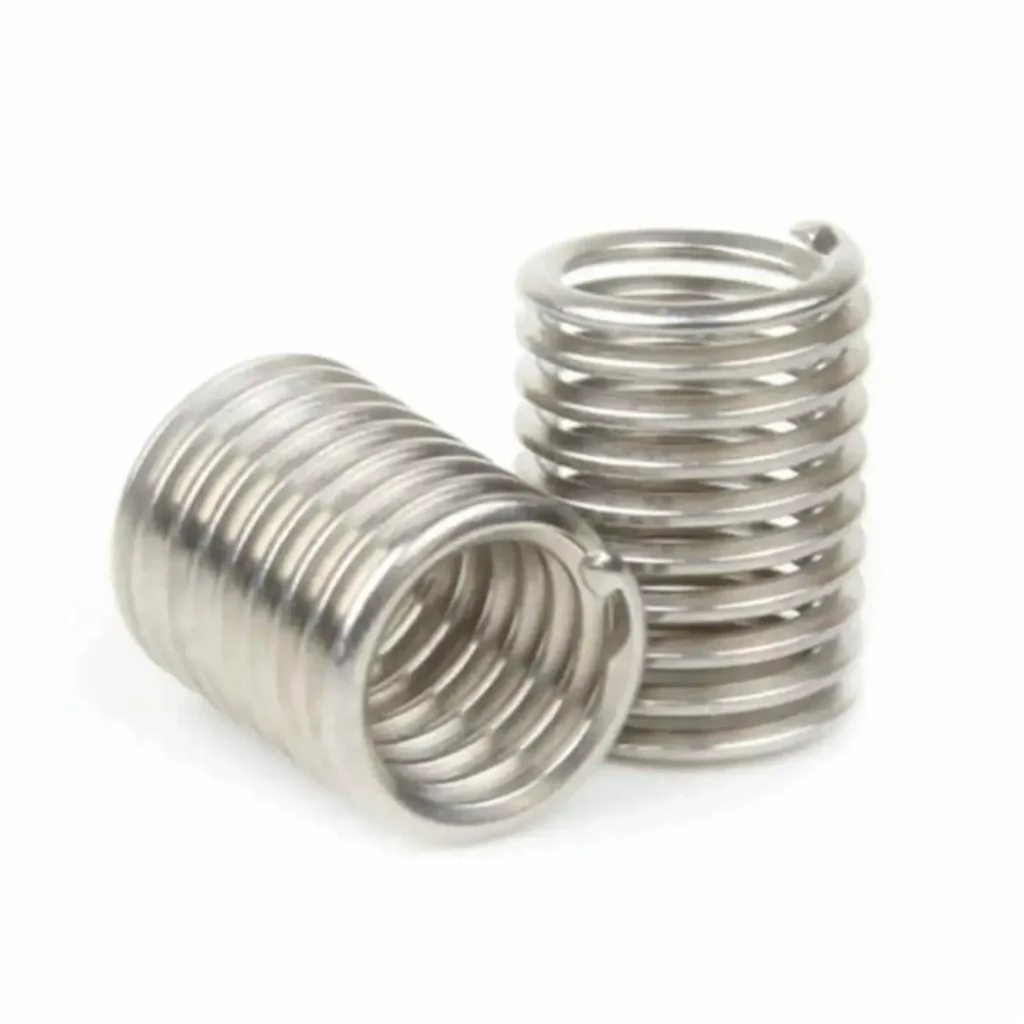
Advantages:
Easy to Install: Inserted using a small installation tang, which is later broken off with a simple tool.
Wide Material Compatibility: Suitable for use in steel, aluminum, plastic, wood, and other base materials.
Reusable: High wear resistance enables repeated assembly and disassembly without loss of thread quality.
Cost-Effective: A practical choice for general industry and maintenance applications with excellent value for performance.
b. Self-Locking Inserts
Self-locking inserts are designed with an added locking mechanism to enhance vibration resistance and maintain secure fastening under dynamic conditions.
Structure & Features:
Include a locking coil or interference section—a section of the insert that provides friction against the screw when installed.
This interference creates a slight elastic deformation in the bolt, generating a self-locking effect.
Installed similarly to free-running types, though they typically require slightly higher torque due to the locking zone.
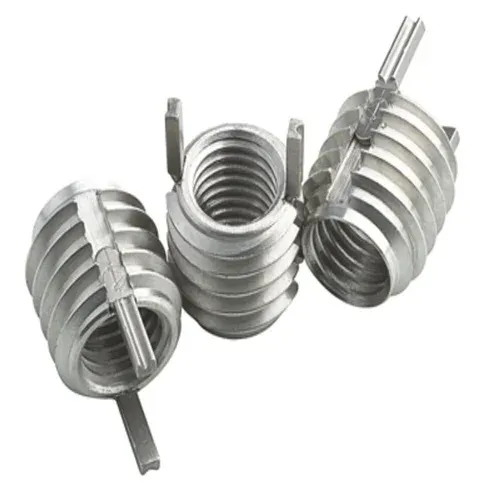
Advantages:
Vibration and Loosening Resistance: Ideal for high-vibration or impact-prone environments.
Enhanced Safety: Widely used in applications like engines, aircraft seating, transmissions, and critical mechanical joints.
No Extra Locking Parts Needed: Reduces the need for additional locking methods such as spring washers or thread-locking adhesives.
Improved Connection Stability: Excellent for long-term installations or assemblies that cannot be easily maintained.
Tanged vs. Tangless: What’s the Difference?
When it comes to wire thread inserts, the presence or absence of a tang—a small driving notch at one end—determines how the insert is installed and which environments it is best suited for. Based on this feature, wire inserts are generally classified into Tanged and Tangless types. While both offer similar performance once installed, they differ significantly in terms of installation method, safety, and compatibility with automation.
a. Tanged Wire Inserts
Tanged inserts are the traditional and most commonly used type. The tang is a small projection at one end of the insert that helps drive the insert into the pre-tapped hole during installation.
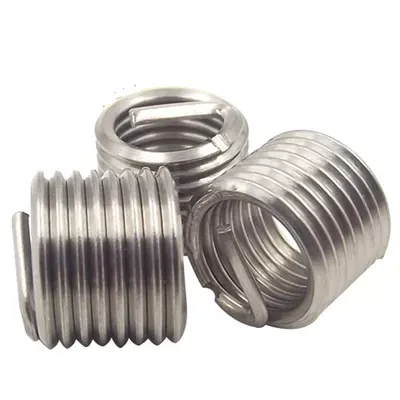
Features and Advantages:
- Proven and Reliable Installation: The tang allows easy engagement with installation tools for smooth insertion.
Simple Post-Installation Process: After installation, the tang is removed using a tang break-off tool with a quick tap.
Versatile Use: Suitable for a wide range of industries, including aerospace, automotive, electronics, and heavy equipment.
Cost-Effective: Lower manufacturing cost makes them ideal for high-volume or general applications.
Considerations:
The tang must be fully removed after installation to avoid potential issues from leftover debris.
Not recommended for environments sensitive to Foreign Object Debris (FOD), such as aerospace or precision medical devices.
b. Tangless Wire Inserts
Tangless inserts are a modern solution developed to meet the needs of high-reliability and automation-focused industries. These inserts eliminate the tang entirely, thereby avoiding any risk of tang break-off debris.
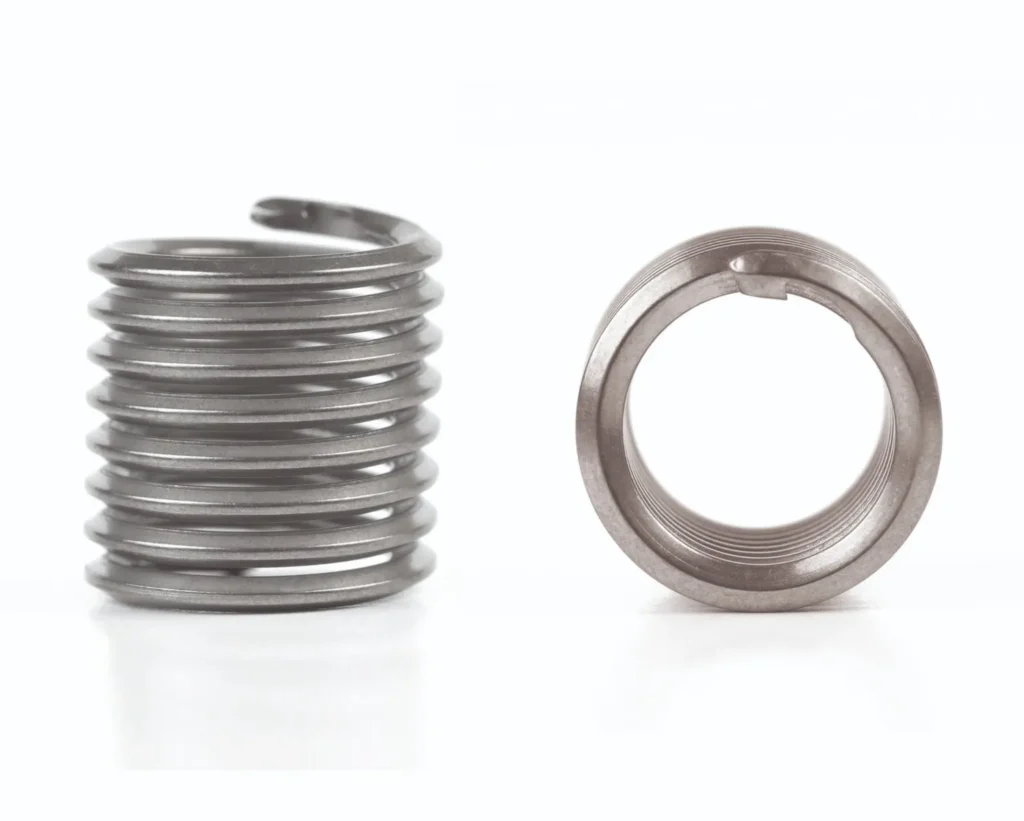
Features and Advantages:
Zero FOD Risk: No tang means there is no possibility of leftover foreign objects, making them ideal for aerospace, defense, and medical applications.
Bi-Directional Installation and Removal: With specialized tools, tangless inserts can be installed and removed from either direction, increasing maintenance and assembly flexibility.
Automation-Friendly: Better suited for use with automated assembly lines, improving speed and reducing human error.
High Safety Compliance: Meets stringent standards such as MIL-SPEC, making them suitable for mission-critical components.
Considerations:
Generally more expensive than tanged inserts due to higher precision requirements.
Requires specialized tools and more careful handling during installation.
What Materials Are Threaded Inserts Made Of?
Material selection plays a critical role in the performance, durability, and reliability of wire thread inserts. Different environments and engineering applications demand varying levels of corrosion resistance, mechanical strength, thermal stability, or conductivity.
1. Stainless Steel
Main Characteristics: Excellent corrosion resistance, high mechanical strength, and outstanding wear resistance make stainless steel the most commonly used material for wire thread inserts.
Performance Advantages:
Suitable for humid, salty, or chemically aggressive environments (e.g., marine or chemical applications);
High wear resistance allows for repeated assembly/disassembly without thread damage;
Long service life and virtually maintenance-free;
Typical Applications: Aerospace, automotive, marine, heavy machinery, and general manufacturing industries.
2. Carbon Steel (Zinc-Plated)
Main Characteristics: A cost-effective option for general industrial environments, usually treated with zinc plating for added corrosion resistance.
Performance Advantages:
Lower cost makes it ideal for mass production and low-corrosion applications;
Zinc coating provides temporary corrosion protection, but not suitable for long-term exposure to moisture;
Moderate strength with good installation properties;
Typical Applications: Appliances, electrical devices, general industrial assembly, tools, and fixtures.
3. Titanium Alloy
Main Characteristics: Lightweight, high-strength material with excellent temperature and corrosion resistance, ideal for high-performance engineering.
Performance Advantages:
Low density helps reduce overall structure weight—valuable in aerospace designs;
Performs reliably in high-temperature, high-pressure, and corrosive environments;
High chemical stability ensures compatibility with aggressive media;
Typical Applications: Defense, aerospace, medical devices, submarines, and deep-sea systems where extreme material properties are required.
4. Copper Alloy
Main Characteristics: Excellent electrical and thermal conductivity, combined with good corrosion resistance and workability.
Performance Advantages:
High electrical conductivity makes it ideal for electrical connection points;
Non-magnetic, suitable for EMI-sensitive environments;
Corrosion resistance is better than carbon steel, especially in acidic or alkaline conditions;
Typical Applications: Electronic assemblies, electrical equipment, precision instruments, and communication systems.
Summary Recommendation:
| Application Environment | Recommended Material |
| High corrosion (marine, chemical) | Stainless Steel |
| General-purpose, cost-sensitive | Zinc-Plated Carbon Steel |
| High-temperature, lightweight, high-strength | Titanium Alloy |
| Electrical and thermal conductivity required | Copper Alloy |
What Are Different Types of Threaded Inserts Used for?
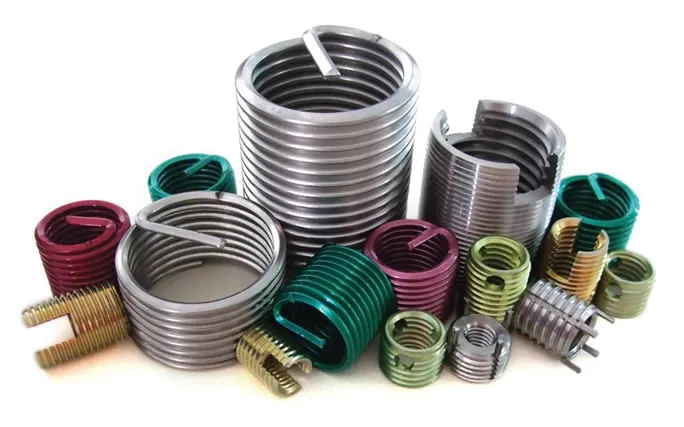
Wire thread inserts are widely used across various industries due to their ability to enhance thread strength, repair damaged threads, and improve wear and vibration resistance. Depending on their specific types—such as free-running, self-locking, tanged, or tangless—as well as their material compositions like stainless steel or titanium alloy, each type is suitable for distinct application scenarios.
1. Applications of Free-Running Inserts
General Thread Reinforcement: Ideal for reinforcing threads in soft materials like aluminum and magnesium;
Repair Purposes: Commonly used to restore stripped, worn, or damaged threads;
General Assembly: Widely applied in household appliances, consumer electronics, furniture, and hardware;
Tooling & Fixtures: Perfect for components requiring frequent disassembly and reassembly without thread degradation.
2. Applications of Self-Locking Inserts
High-Vibration Environments: Ideal for fastening components in engines, compressors, and vibrating machinery;
Aerospace & Military Equipment: Ensures secure fastening under dynamic loads and extreme environments;
Transportation Industry: Used in railways, metros, electric vehicles, and other mobile systems where vibration resistance is critical;
Automation & Robotics: Enhances stability and long-term durability of mechanical joints.
3. Applications of Tangless Inserts
Aerospace / Military Manufacturing: Prevents foreign object debris (FOD) caused by broken tangs—critical for flight safety;
Medical Equipment: Required in environments that demand absolute cleanliness and reliability;
High-Precision Automation: Supports automated installation and removal, improving production efficiency;
Consumer Electronics Housing: Reduces insertion errors and the risk of debris contamination.
4. Applications by Material Type
| Material Type | Typical Application Industries |
| Stainless Steel | Automotive, heavy machinery, aerospace, general industry |
| Zinc-Plated Carbon Steel | Electrical devices, tools, light industrial assembly |
| Titanium Alloy | Aerospace, marine, high-performance medical instruments |
| Copper Alloy | Electronics, telecommunications, precision instruments |
Summary:
The choice of wire thread insert depends not only on the required thread strength, but also on factors such as vibration, temperature, humidity, and FOD sensitivity. Selecting the right type and material significantly enhances the safety, durability, and maintenance efficiency of your product.
How to Choose the Right Threaded Inserts?
Selecting the proper wire thread insert is essential for enhancing thread strength, ensuring secure fastening, and extending the service life of components—especially in critical engineering or repair applications. Below are five key decision-making factors to help you make an informed choice.
1. Choose Based on Base Material
The hardness and strength of the parent material determine the appropriate insert type. Wire thread inserts serve to reinforce internal threads in materials that are weak or frequently assembled.
Soft Base Materials (e.g., plastics, aluminum, magnesium)
- Characteristics: Threads are prone to wear, stripping, and low load capacity.
- Recommended Insert: Free-Running Inserts
- Why: They provide smooth, ISO-standard internal threads and significantly improve wear resistance and load capacity.
Medium Hardness Materials (e.g., copper, zinc alloys)
Recommendation: Free-running inserts can still be used; for applications with vibration, consider self-locking types.
Hard Base Materials (e.g., steel, alloy steel)
Recommendation: Use self-locking inserts in areas with high dynamic load or frequent maintenance to prevent loosening.
2. Is Vibration or Anti-Loosening Performance Required?
In applications subject to vibration, thermal expansion, or mechanical shock—such as in engines or aerospace—standard threads may loosen over time.
Recommended Insert: Self-Locking Type
- Features: Contains a locking coil section that provides friction to resist loosening.
- Benefits: Prevents fastener loosening due to vibration or impact.
- Applications: Automotive engines, aerospace components, heavy machinery.
- Note: For frequent disassembly, verify the insert’s locking durability over repeated cycles.
3. Is Foreign Object Debris (FOD) Prevention Critical?
In fields like aerospace, military, and medical, foreign object debris (FOD) can lead to catastrophic failure. Traditional tanged inserts pose a risk of broken tangs being left inside assemblies.
Recommended Insert: Tangless Type
- Features: No tang; eliminates risk of broken tangs causing FOD.
- Advantages:
- Enhances safety by eliminating loose metal debris
- Allows bi-directional installation/removal, ideal for automation
- Suitable for enclosed or sensitive assemblies where debris removal is not possible
- Common Uses: Fuel systems, radar housings, pacemaker casings, aerospace enclosures
4. Is the Environment Corrosive?
Corrosive environments (humidity, salt spray, chemicals) significantly affect the lifespan of inserts. Choosing the right material is crucial for long-term reliability.
Recommended Materials by Environment:
| Material Type | Suitable Conditions |
| Stainless Steel (e.g., 304, 316) | General industry, mild corrosion, most common and economical |
| Zinc-Plated Carbon Steel | Indoor use, cost-effective, light corrosion resistance |
| Titanium Alloy (e.g., TC4) | High corrosion, high temperature, weight-sensitive applications |
| Nickel-Based Alloys (e.g., Inconel) | Harsh chemical or high-heat environments, e.g., nuclear, chemical plants |
Additional Tips: Check for welding compatibility and certification for food or medical-grade use.
5. Is Mass Production or Automation Required?
For high-volume production, efficient installation is key. Manual installation and tang removal reduce speed and increase inconsistency.
Recommendation: Tangless Inserts + Automation-Compatible Tools
- Compatibility:
- Suitable for automated feed and torque control systems
- No tang break-off step, minimizing labor and error
- Easy maintenance and rework
- Applications: Electronics assembly, automotive parts lines, UAVs, home appliances, OEM medical devices
Summary Recommendation Table
| Application Condition | Recommended Insert Type/Material |
| Aluminum Base Material | Free-Running + Stainless Steel |
| Vibrating Environment | Self-Locking Inserts |
| Aerospace/Medical | Tangless Inserts |
| Corrosive Conditions | Stainless Steel or Titanium Alloy |
| Mass Production/Automation | Tangless + Automation-Compatible Models |
8. Conclusion
Wire thread inserts are a compact and reliable solution for thread reinforcement and repair, suitable for a wide range of industrial applications. Understanding the different types and characteristics helps ensure safer and more efficient fastening during the design and assembly stages. Through the insights provided in this article, we hope readers can select the most appropriate insert type and material based on their specific needs—achieving the optimal balance between performance and cost.
Do You Have Any Questions?
Let Us Solve Your Problem
Buy Threaded Inserts from Rivetfix
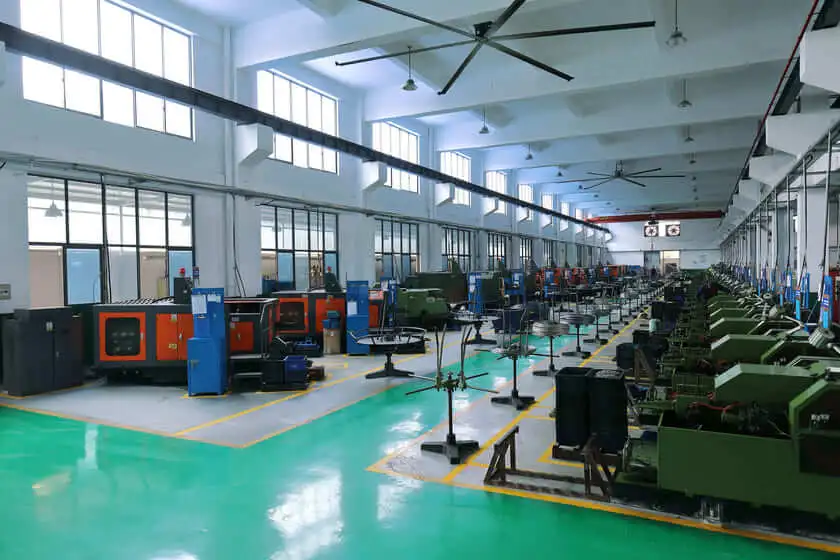
As a leading fastener manufacturer in China with more than 15 years in the industry, Rivetfix are committed to providing first-class quality fasteners and responsive services to the world.
We supply a wide range of threaded inserts designed to meet the unique demands of your projects. Rivetfix ensures you have the right solution for every application. Choose Rivetfix for versatile, cost-effective, and durable fastening solutions tailored to your specific needs. In addition, we can also provide customized service according to your requirements.
Looking for a reliable way to strengthen your threaded connections or repair damaged threads? Wire thread inserts are the perfect solution. Whether you’re working in aerospace, automotive, electronics, or general manufacturing, these inserts offer exceptional durability, anti-vibration performance, and long-term reliability. Don’t compromise on thread strength—upgrade your fastening systems today with high-quality wire thread inserts.
Contact us now to find the ideal solution for your project!
Get High Quality Rivet Nuts Quote!
Send Your Rivet Nut Request
For more than 20 years, Rivetfix has helped customers solve many rivet nuts sourcing needs and technical challenges.
Have a question? Contact us and we’ll provide you with the perfect solution.
